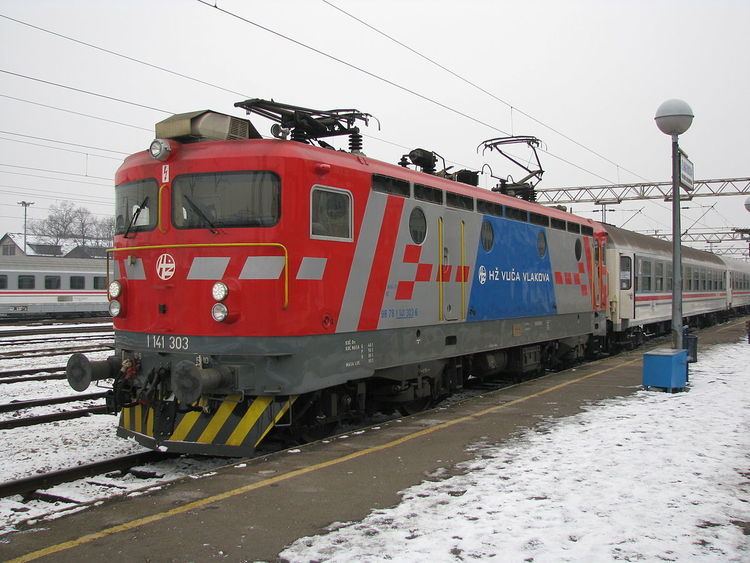Power type Electric Builder Končar Group UIC class Bo'Bo' | Designer ASEA Build date 1967 - 1981 | |
 | ||
Total produced 285(48 1141.0,11 1141.1,33 1141.2,25 1141.3,total 117 for HŽ)
130 for Romania | ||
The JŽ class 441 is an electric locomotive built for Yugoslav Railways. The units are now used by Hrvatske željeznice (HŽ class 1141), Željeznice Federacije Bosne i Hercegovine, Željeznice Republike Srpske, Serbian Railways and Rail transport of TPP Nikola Tesla (ŽS 441), Makedonski Železnici, Turkish State Railways and Romanian Railways-CFR.
Contents
History
This series is originally based on the license of the Swedish company ASEA. It was produced in order to be used as a universal locomotive, for both passenger and freight traffic. There was a need to have a powerful electric locomotive to pull freight. At that time, this was mainly on the mainline tracks, which were electrified, and prepared for 160 km/h. Originally, it had diode voltage selector. A later, modernised series, the 3xx subseries, include thyristor voltage selector, and an on-board computer. Later 3xx series have an onboard look-behind-camera for video surveillance of the sides and also new livery.
Voltage
This locomotive utilises 25 kV/50 Hz AC.
Gearing
Depending on subseries, 1xx, 2xx or 3xx, some members of this class can drive with maximum speed 100 km/h (62 mph), 120 km/h (75 mph), 140 km/h (87 mph), or 160 km/h (99 mph) (latest series), depending on the gearing. The most common gearings are for 120 km/h (75 mph) (classes 0xx, 1xx, 2xx, 3xx, 4xx, 5xx, 8xx) intended for freight and passenger trains, and 140 km/h (87 mph) (classes 6xx and 7xx) intended for passenger services, with locos for 160 km/h (99 mph) being rare and locos for 100 km/h (62 mph) all converted for 120 km/h (75 mph). The models with higher maximum speed got less tractive power and are used for passenger or light freight trains only, whereas the models with lower maximum speed got high tractive power and are thus able to pull heavy freight trains as well.
Liveries
Original livery of Yugoslav Railways was red (occasionally orange) and blue with white stripe and "Jugoslovenske železnice" inscription on it. Serbian Railways class 441 today have red and greyish-dark blue livery. Locomotives of Republika Srpska have similar livery as the original Yugoslav, but with faded colours and a white stripe between blue and red.
In Croatia, there are three basic liveries. Standard one is the red with white stripe. There is also a very rare livery, in colours similar to Croatian flag. The third, newest livery is the HŽ official livery (red and grey with blue stripe).
Export
Starting with 1972, between Yugoslavia and Romania a convention was concluded for reciprocal delivery for locomotives. It also involved the Romanian companies Electroputere Craiova and UCM Reşiţa. Thus the Romanian party delivered to Yugoslavia a number of 103 Co’Co locomotives of the 461 JŽ series and sub-assemblies for 130 Bo’Bo locomotives of the 441 JŽ series, delivered to Romania and registered with CFR under the number 040-EC. The Yugoslavian locomotives derived directly from the already renowned prototype ASEA RB1 improved in the mechanical construction under the RC1 series pattern.
Since the dissolution of SFRY, this locomotive is also exported. Some pieces are in the Republic of Macedonia, and some were leased to Turkish Railways (as TCDD E52500 class). Now, most of the former Republics which have been formed after the dissolving of Yugoslavia have some of this locomotives, inherited from the former JŽ. This units have different designations, but very similar characteristics.
In Popular Culture
One example made an appearance coming out of a tunnel towards the end of the movie Force 10 From Navarone. This is anachronistic as the movie took place during World War II.
